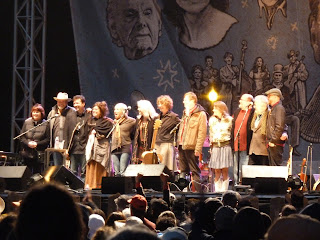Every year I take an extended hiking trip somewhere in the backwoods with a few friends from the Bay Area. This year, after a fair amount of planning, we spent a couple of weeks in August on the
Olympic Peninsula (WA). Expectations were high, yet they were still exceeded by the region's profound beauty and amazing diversity. Most of the time was spent in
Olympic National Park including the Seven Lakes Basin area, Hoh Rain Forest and the rugged coast north of Rialto Beach. We also spent some time in
Port Townsend, a friendly little maritime community, and briefly stopped at the recently removed
Elwha Dam, reportedly the largest dam removal in the world to date.
In the interest of continuous improvement, it can be useful after an extended backpacking adventure like this to consider takeaways or lessons learned. A few of the more salient takeaways from Olympic Peninsula include:
1. Effective and redundant water purification systems
Water from crystal clear alpine lakes in the Olympic Mountains is probably fine, but I prefer to purify all my water anyway because it should be a relatively simple process which ensures I won't be sick later. Unfortunately, my Katadyn Hiker water filter, only a few years old, broke on the first backpacking day. The plastic that secures the intake hose snapped off. We had iodine tablets, but a ranger had warned us that iodine was ineffective against
Cryptosporidium which could be a risk when we got to the coast. We were able to purify water with my Katadyn by placing the entire thing in a small pot instead of using the intake hose, but the lack of a pre-filter caused the entire system to become clogged. Towards the end of the trip dirt was getting through the system and we started boiling our water. Must find something better...
2. Realistic planning; maximize day hiking
There is much to see in Olympic Peninsula and we planned an overly ambitious trip with many different campsites. After an arduous Day 3 we were all so exhausted we needed to modify the plan in order to recover before donning enormous backpacks again. Fortunately, we found an accommodating ranger. Obviously, it's much easier to hike with a small day pack rather than your full backpack, and we might have actually covered more ground with fewer campsites and more day hiking. Day hiking also enables each individual to choose what to do on any given day while still remaining part of the group.
3. Minimize car camping
We modified our plans, but still wanted to see the Hoh Rain Forest, so we decided to car camp near the Hoh River trailhead. Backpacking allows you to enjoy nature in the absence of people and vehicles, but car camping generally does no such thing. After eventually driving to the coast and realizing we couldn't make much progress hiking up the coast before dark, we lamented having to car camp another night. However, we discovered a mile-long gravel bar in the Quillayute River which was an ideal spot to pitch our tents for the night before starting the trek up the coast the next day.
 |
| Coastline campsite |
 |
| Rustic pit toilet with spectacular view |






















































